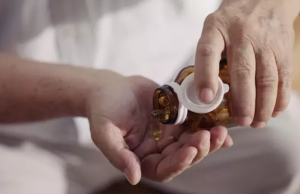The microwave is a marvel of modern technology. Food can go from ice cold to blazing hot in a matter of seconds. It cuts down on cook time, speeds up prep time, and all around makes the home cook’s job easier.
But not everything in your fridge or pantry should go into a microwave. Some foods, beverages, and containers can release toxins, burn, melt, or even explode if they’re nuked for less than a minute. Some may even turn toxic.
A few of these foods are fairly common—you may have even heated one in the microwave this morning. Just because something bad hasn’t happened doesn’t mean it won’t, however, so protect yourself and others in your kitchen by keeping these things away from the hot box.

1. Eggs
Trying to make a hard-boiled egg in a microwave is not going to end well for you, and you’re likely to end up with a big mess to clean up.
These egg-plosions are caused, because the steam created inside the shell makes the egg heat up too quickly. With nowhere for the steam to escape, the shell explodes.
2. Anything Metal
Most people are probably already familiar with this advice. For those who aren’t, putting metal in a microwave will make the metal create sparks and smoke. It will also probably ruin your silverware or plate or whatever else you put in it. The microwave itself could get damaged.
3. Whole Potatoes
This one is a little tricky. Again, like the egg, the build-up of heat inside will cause an explosion and a mess to clean up.
On the other hand, you can have a pretty good meal in just a few minutes if you use a fork to stab the potato a bunch of times before microwaving it. Try it with a sweet potato too for a quick snack.
4. Whole Hot Peppers
Though you’re probably ok if you have some leftovers with sliced up peppers in them, microwaving a whole pepper is a bad idea.
Like some of the other examples, hot peppers have a bad reaction to the radiation in a microwave. The reaction creates a steam which will be infused with capsaicin, the chemical responsible for the spice and heat in your peppers.
5. Styrofoam
In all seriousness, aside from being bad for the environment, styrofoam is also a very bad idea to microwave (although some kinds may be safe—check for labels). Some possible side effects could be styrene gas which is known to cause cancer, chemicals leeching into your food and problems with your endocrine system.
If you like want to keep your hormones balanced, take the extra time to put your food in a safe container before microwaving it!
6. Some Plastic Containers
This isn’t a hard and fast rule. Though some containers are definitely microwave-safe, others could be a hazard to you and your food. If you want to avoid poisoning your food with chemicals found in plastic, it’s probably best to avoid it altogether.
7. Paper Bags
Paper bags are liable to catch fire in a microwave which would cause you a big damage. There’s also the chance that any ink printed on the paper could release itself into your food.
Paper plates, on the other hand, are generally pretty safe.
8. Grapes
This may seem similar to the egg example, but it has its own interesting twist. Unlike eggs, grapes are small and made of the right material to basically act like tuning forks for the radiation in a microwave.
At the right distance apart, microwaved grapes can actually create plasma. Though it might look cool, it may also cause a literal explosion and will definitely ruin your appliance. (Do Not Try!)
9. Travel Mugs
This one follows pretty naturally from some of the rules listed above. Although you might want that coffee reheated fast, don’t do it in a thermos made of plastic or metal.
10. Nothing
Strangely enough, it’s also a really bad idea to run your microwave when there’s nothing inside. The way a microwave works is by releasing low levels of radiation (called microwaves) to heat up your food. Though these waves are pretty weak generally, though still strong enough to heat your meals, if they have nothing to hold onto they can get stronger.
Sources: htv.com.pk, realsimple.com


















